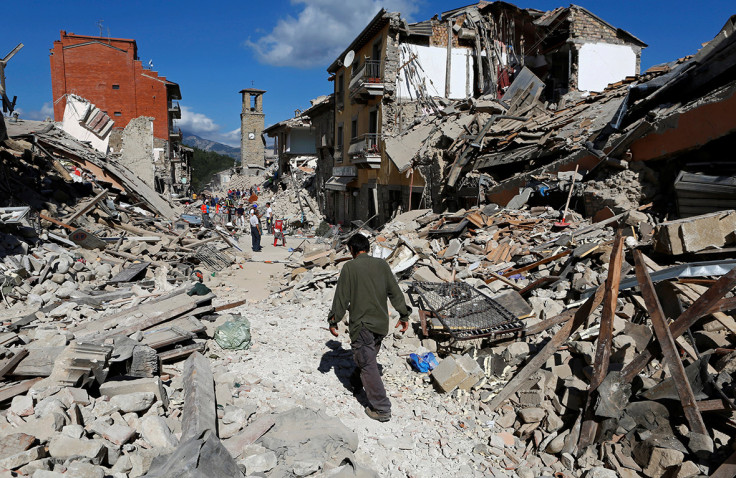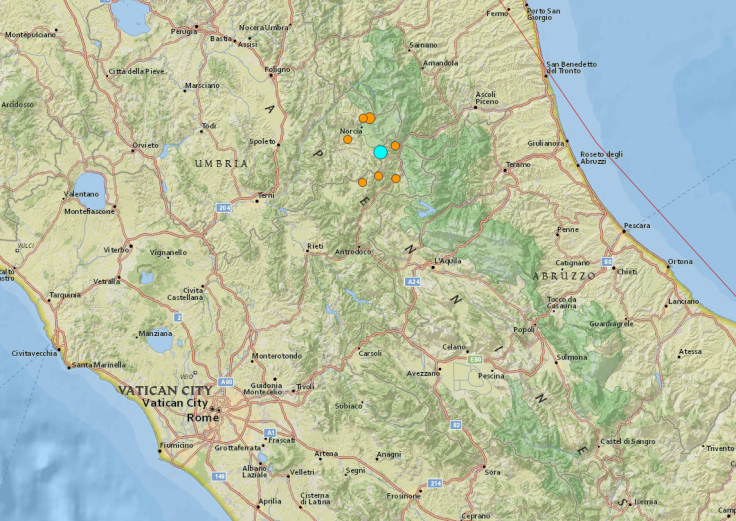Why does Italy suffer more earthquakes than the rest of Europe?
Italy is one of the most seismically active countries in Europe - and has a long history of earthquakes.
Dozens of people have been killed after a 6.2 magnitude earthquake stuck a mountainous region of central Italy, devastating villages and leaving many trapped under rubble. Officials have so far confirmed more than 240 deaths, the majority in the villages of Pescara del Tronto, Amatrice and Accumoli.
The earthquake, estimated to have struck shortly after 3.30am at a shallow depth of 10km below the epicentre in Umbria, was felt across a vast region of the country, including the capital Rome.
A series of aftershocks have continued to affect the area, including a second earthquake of magnitude 5.5.
Italy is one of the most seismically active countries in Europe. It has a long history of earthquakes, essentially due to the collision of the African and Eurasian tectonic plates which pushed up the Apennine mountain range, which runs along the backbone of Italy. One of the most recent earthquakes, and one of the deadliest, struck the Abruzzo region in 2009, killing around 300 people.
"Europe has a long history of damaging earthquakes," says Dr Carmine Galasso, a lecturer in earthquake engineering at UCL. "While earthquakes are widespread throughout Europe, the most destructive events have historically occurred in the Mediterranean countries, particularly Greece, Italy, Portugal, and Turkey.
"Over the last 2,000 years, more than 400 destructive earthquakes have been documented in Italy.
"Significant historical events include the 1908 magnitude 7.1 Messina earthquake, which is considered to be one of the most powerful natural disasters to have taken place in Europe, the 1976 magnitude 6.4 Friuli earthquake, the 1980 magnitude 6.9 Irpinia earthquake, and the 2009 magnitude 6.3 L'Aquila earthquake."

Dr Jennifer Weston, a seismologist at the International Seismological Centre, says Italy is prone to earthquakes for two reasons – its location and its landscape.
"Italy is on two massive tectonic plates – Eurasia and Africa – which are colliding, and there is also subduction of a smaller microplate to the east of Italy. So essentially the crust in this region is being pulled in all different directions and it is this movement that is stored up as energy in the crust over time, and is then released in earthquakes," Weston says.
"There just isn't this kind of tectonic set up in other countries. The UK for example sits in the middle of a tectonic plate, which is stable and results in far fewer earthquakes."
Italy's famed landscape also plays a part in the destruction caused by an earthquake. "Another reason why some of the earthquakes in this particular region of Italy are so damaging is because the region itself is mountainous," Weston says. "Shaking in areas with steep slopes can lead to landslides which can be just as damaging as the direct shaking of buildings. This was the case in the L'Aquila earthquake in 2009, and more recently in the 2015 Nepal earthquake."

But why are some of Italy's earthquakes so catastrophic in villages? As many seismologists will point out, it is not the tremors that kill people, it is the buildings.
"Why the earthquakes cause so many casualties is linked to the vulnerability of the building stock," Dr Tiziana Rossetto, a professor of earthquake engineering at UCL who witnessed the damage caused by the 2009 L'Aquila earthquake first hand. "Although Italian seismic building codes are state of art, they are applied to new buildings and the majority of the building stock precedes the introduction of these seismic codes.
"In particular, the historical centres of many small towns, such as in the affected areas, are composed of fairly weak masonry construction that is very vulnerable to earthquakes, in particular if no strengthening interventions have been carried out in the past. This means that moderate earthquakes can result in the collapse of buildings, and therefore, casualties."
While there is currently no way of predicting an earthquake, the best way to minimise the impact is to ensure all buildings in tremor-prone areas are correctly reinforced.
Deadliest earthquakes in Italy in the last century
April 2009: L'Aguila, around 300 deaths, magnitude 6.3
November 1980: Campania/Basilicata, estimated 2,400-4,900 deaths, magnitude 6.9
May 1976: Fruili, estimated 900-980 deaths, magnitude 6.5
January 1968: Sicily, estimated 230-400 deaths, magnitude 5.5
July 1930: Irpinia, around 1,400 deaths, magnitude 6.6
January 1915: L'Aquila, estimated 29,000-32,000 deaths, magnitude 6.7
December 1908: Strait of Messina, estimated 75,000-200,000 deaths, magnitude 7.1
September 1905: Calabria, estimated 500-2,500 deaths, magnitude 7.2
© Copyright IBTimes 2025. All rights reserved.






















